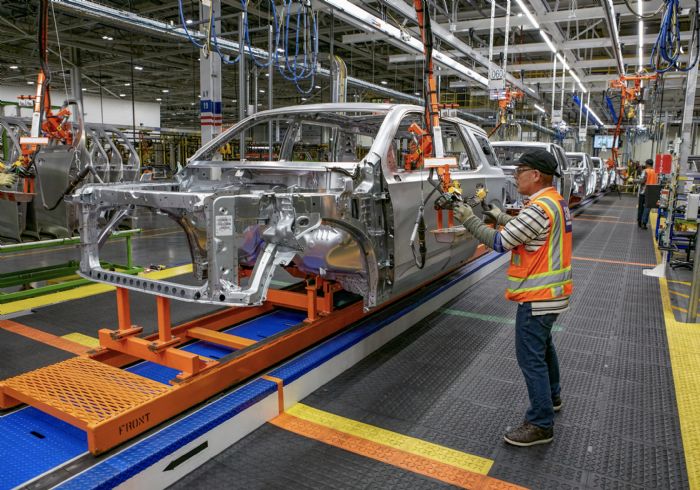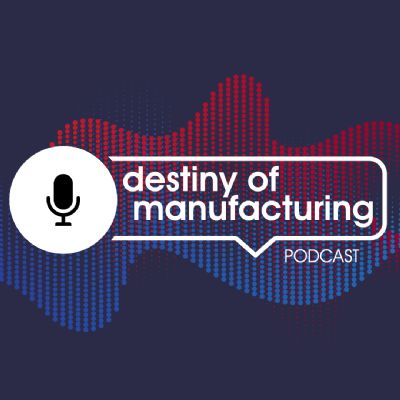“There were a number of new products contributing to the expansions,” says Stephanie Brinley, principal automotive analyst for IHS Markit. “In 2020, Buick, Chevrolet, Kia, Genesis, Hyundai and Toyota were among brands which added to the number of utility vehicles available in showrooms.” IHS Markit forecasts that there remains opportunity for utility vehicles to increase share even further in 2021, reaching about 52 percent of total U.S. light-vehicle sales, and that pickup trucks will hold about 20 percent share into 2021.
While concerns about the spread of COVID-19 caused state and local governments to ask people to stay at home as much as possible, “dealerships are not in a lockdown situation and have honed their ability for reaching consumers under these conditions,” Brinley says, commenting on a relatively bright sales outlook.
Seeking Supply-Chain Harmony
In surveying supply-chain relations through all of the 2020 uncertainty, it’s helpful to consider the latest Plante Moran 2020 North American Automotive OEM-Supplier Working Relations Index (WRI), issued in mid-December.
The survey asked suppliers to identify best practices that they felt would help improve OEM/supplier relations, and six key best-practice areas emerged:
- Communication frequency and quality: Deliver a fixed cadence of cross-functional communication that extends beyond a discussion of the numbers and public-domain information to share best practices on how other suppliers are handling various manpower and HR-related issues.
- Communication methods and technology: Leverage electronic communication for routine meetings and onsite reviews.
- Communication level of specificity: Include upper management and encourage open-forum sharing of concerns, with particular attention to order quantities and willingness to adjust to help with capacity constraints.
- Employee safety and HR-related actions: Collaborate closely and share best practices to enable more first-to-mark opportunities, leverage supplier expertise, and implement tactical monitoring of the number of quarantined employees to protect production-launch dates.
- Risk mitigation: Assess how the pandemic has potentially impacted operations, finances, production and operative conditions, and staff health and security through an open, direct and trust-filled exchange of information. Ensure that suppliers have sufficient information to assess the whole situation, understand what to expect, reinforce protocols and risk assessment, and be better prepared to face the whole contingency. Avoid putting heavy pressure on suppliers or requiring ongoing highly detailed status updates as they manage operations through the pandemic.
- Financial support and cost containment: Support suppliers’ tactical operations, data analysis and reporting teams by providing detailed logistics information to help minimize shipping costs and mitigate the challenges of sourcing product overseas.
“Companies inside and outside of the automotive industry can take these observations and instill them into their own customer-supplier practices and policies,” says Dave Andrea, Plante Moran principal.
Semiconductor Shortage Making Huge Impact
While the industry weathered an almost daily fly-in-the-ointment scenario throughout 2020, another flew in as 2021 dawned.
“Chipaggedon” is how a Daniel Sharkey client describes to him the semiconductor-chip shortage, that, after the new year, has been impacting the U.S. automotive supply chain. Sharkey, a partner at Brooks Wilkins Sharkey & Turco PLLC and a frequent speaker at PMA events including the Auto Parts Suppliers Conference, concentrates his practice on manufacturing supply-chain issues, and the chip shortage has become quite the issue.
A pandemic-induced surge in electronics demand last year initially caused Chinese suppliers to fall behind in semiconductor production, which initially sent ripples worldwide. On top of this, the auto supply chain, citing work shutdowns and demand slowdowns once the pandemic hit, cut chip orders—a perfect storm as auto production resumed later in 2020. Suppliers simply couldn’t quickly ramp up to serve the auto-industry rebound. As evidence of the supply shift, Taiwan Semiconductor Manufacturing, a behemoth semiconductor supplier, revealed that the automotive market accounted for only 3 percent of its revenue in the fourth quarter of 2020, as compared to 51 percent for smartphones and 31 percent for high-performance computing chips.
By early January 2021, U.S.-located OEM plants producing electronics-laden vehicles―each containing from 40 to more than 150 chips―began cutting production: Ford idled a Louisville, KY, SUV plant; Toyota cut Tundra pickup production in San Antonio, TX, by almost half; Honda decreased U.S. vehicle builds; Fiat Chrysler NV and Volkswagen reduced North American production; and GM warned of supply-shortage production issues.
“It’s incredible how quickly this just blew up,” Jeff Schuster, president of global forecasting at industry firm LMC Automotive, told Wall Street Journal (WSJ) in January.
The shortage has yet to let up at press time. In early February, General Motors announced plans to cut North American production, and Ford followed by announcing a 2021 first-quarter 20-percent production cut. With revenue greater for semiconductor providers in non-automotive sectors—some gaming processors sell for several hundred dollars apiece, a chip maker told WSJ, whereas many microcontrollers used in automobiles bring a dollar or less—it may be a while before chip-production capacity pivots back to meet auto-industry demand. The reality, as one microcontroller supplier so succinctly put it: $1 chips are preventing shipments of $40,000 vehicles. The chip shortage, as many industry analyts offer, may last into 2021’s third quarter. As chip makers run at full tilt with, in many cases, dated equipment, the auto industry has little recourse but to just wait it out. MF
Technologies: Management
Comments
Must be logged in to post a comment. Sign in or Create an Account
There are no comments posted. Management
ManagementAutomation and Workplace Culture: Why It Doesn’t Have to be ...
Brad Stringfellow July 7, 2025








 Globally, 2020 sales wrapped at about 77 million units, according to Guido Vildozo, senior manager of Americas Light Vehicles Sales Forecasting for IHS Markit, noting that 80 to 83 million units represent the accepted break-even numbers. On the positive side, “we've certainly been going at that (break-even) pace during the second half of 2020,” he offered during a February presentation at Automotive Logistics and Supply Chain North America Live 2021.
Globally, 2020 sales wrapped at about 77 million units, according to Guido Vildozo, senior manager of Americas Light Vehicles Sales Forecasting for IHS Markit, noting that 80 to 83 million units represent the accepted break-even numbers. On the positive side, “we've certainly been going at that (break-even) pace during the second half of 2020,” he offered during a February presentation at Automotive Logistics and Supply Chain North America Live 2021. Podcast
Podcast